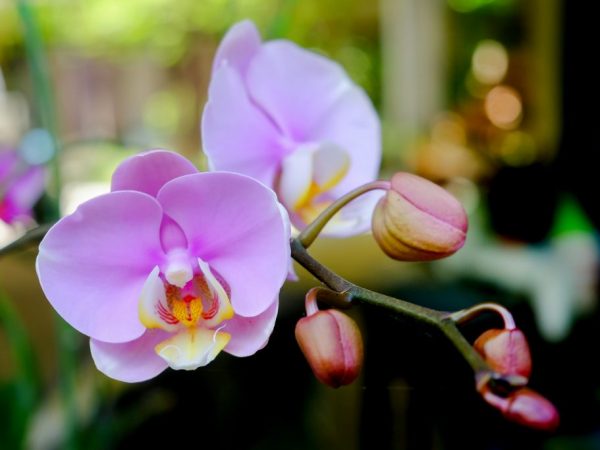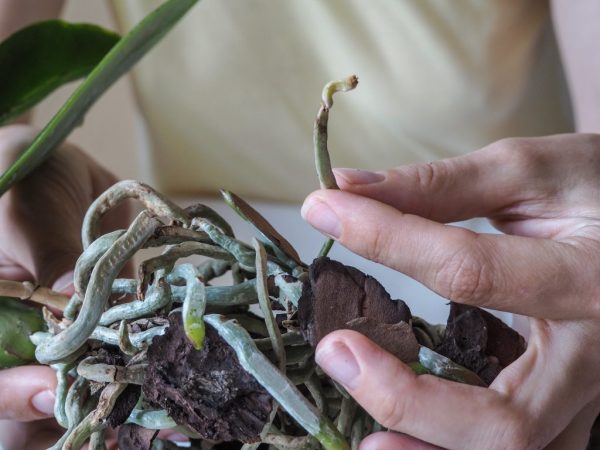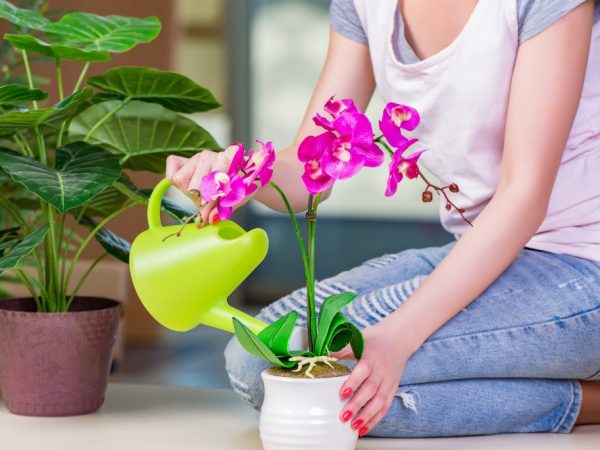Treatment of fusarium in orchids
Fusarium orchid blight is a common problem that gardeners face when growing these moody flowers. It depends on timely prevention and treatment whether the withering will be stopped and the houseplant will be saved from death.

Treatment of fusarium in orchids
Description of the disease
Fusarium rot is a fungal infection. The pathogen enters the flower in several ways:
- through the root system,
- through the peri-root part of the stem,
- through seed material infected with fungal spores or young seedlings.
The most common occurrence of phalaenopsis lesions occurs as a result of penetration through the roots and stem.
Symptoms
Primary signs of the fungal pathogen of fusarium:
- the appearance on the stem and root part of tiny particles of white-pink color,
- redness of the roots,
- the appearance of constrictions on the roots.
After some time, the root system affected by the fungus changes its reddish color to dark and begins to rot. As the fungi develop, they release toxins, poisoning the plant and blocking the passageways through which food and water enter.
The effects of toxins on phalaenopsis can be seen in flower cuts in the form of dark brown rings.

The root system affected by the fungus begins to rot
With a limited supply of moisture and nutrition, the cell layer of the affected areas dies, the stem becomes thinner, the foliage turns yellow, the plant dehydrates. Gradually, Fusarium rot spreads throughout the plant, leading to its general wilting and subsequent death.
An infected orchid becomes a source of danger to other indoor flowers, because the spread of fungal spores occurs, among other things, by air and through garden tools.
Contributing factors
A favorable environment conducive to the spread of the fungal pathogen of fusarium is created by:
- an excess of foam, mineral salts and peat in the soil,
- damage to the root system during the transplant,
- excess moisture generated during irrigation,
- lack of proper air circulation in the room.
Therapeutic measures
If the primary signs of fusarium rot on an orchid are found, the flower is isolated from other indoor plants. Treatment of orchids for fusarium includes several measures:
- the flower is removed from the pot and washed with warm water,
- cut off rotten areas,
- fresh sections are treated with an antiseptic or activated carbon dissolved in water,
- the plant is dried, all vegetative parts are treated with a fungicidal agent, including the root system, stems, foliage and flowers,
- the processed flower is planted in a new pot. If planted in old ones, it must be disinfected with 5% copper sulfate.
- put in a well-lit place.

When the whole plant is affected by Fusarium, the flower is destroyed
As a treatment for phalaenopsis, foundationol is used, 1 g per 1 liter. water. Flower processing is carried out 3 times every 10 days. Before planting, the soil is also treated with a foundationol solution.Watering is carried out so that water falls only on the root part, avoiding stems and foliage. The quarantine of a cured orchid lasts 3-4 weeks.
When the whole plant is affected by Fusarium, the flower is destroyed along with the soil mixture.
Prophylaxis
Fusarium orchid fusarium can be prevented by preventive measures in the process of flower care:
- The humidity level is regulated by ventilating the room and regularly loosening the soil.
- The temperature should not drop below 15 ° C.
- Before planting a flower, the soil substrate is treated with disinfectants.
- The standard for the content of peat and foam is maintained at the level of 10-20% of each component.
- Watering in summer every 3 days, in winter - every 10 days, supplementing it with periodic spraying with warm water in the morning.
- Provide sufficient illumination for the location of the flower.
- The flower is transplanted every 6-8 months to prevent soil salinization.
After treating orchids for fusarium, as a preventive measure, the flower is treated and the root system is watered with fungicidal solutions.
Conclusion
The appearance and development of fusarium on an orchid can significantly damage the plant or lead to its wilting and subsequent death. Signs of a fungal infection detected in time, timely treatment can save a home flower. The best remedy for fusarium rot is prevention.


